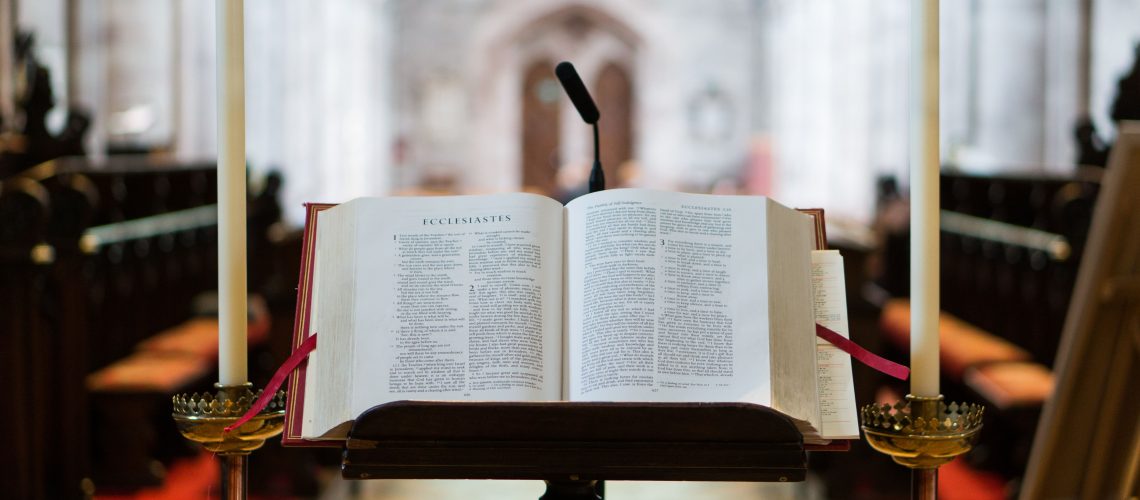On February 21st, 2018, the most influential figure in Evangelical Christianity passed away. Billy Graham converted over 3 million people during his 60-plus years as a preacher, cementing himself as arguably the most famous and influential Christian leader in the United States of America. While Graham influenced the lives of millions of people in the US and around the world, he also changed the American ethos, helping to establish the myth that the United States is founded on Christian ideals. While the Constitution never mentions God or Jesus Christ, Graham and a cohort of conservative businessmen, politicians and clergymen made it their mission to destroy the separation of church and state enshrined in the Constitution. Eventually, their movement infused Christianity with the American government, something which the Founding Fathers never intended.
Billy Graham first stepped into the consciousness of the American public during the early 1950s. A firm believer in conservatism, Capitalism, and Christianity, Graham believed that America was in dire need of a religious revival. Thus, he set out to Christianize the nation, starting with a “crusade” (Graham’s term for an evangelical Christian revival) in Boston in 1950. In early 1951, Graham continued on his mission, traveling to Fort Worth, Texas to hold a four-week revival there. It was an instant success: 336,000 people attended the event, making it the largest evangelical gathering in the Southwestern United States. Soon after the revival, Texas oilman and billionaire Sid Richardson lent his support to Graham’s cause. Richardson’s financial backing would prove invaluable to Graham’s effort to Christianize the United States.
In 1950, Graham tried to spread his influence in Washington D.C., organizing a meeting with President Harry Truman in 1950. Truman was reluctant to display his Baptist religious beliefs publicly or to Graham and their meeting was awkward, an abject failure. Graham, however, was undeterred. He believed that Christianity was the solution to America’s ills, saying, “[The Poor’s] greatest need is not more money, food, or even medicine; it is Christ. Give them the Gospel of love and grace and they will clean themselves up, educate themselves, and better their economic conditions.”
In January 1952, Graham launched a five-week crusade in Washington D.C. His goal was to influence national politics and continue to foment religious revival throughout the nation. Politicians in Washington were enthusiastic to join Graham’s movement. Graham said to a reporter, “As near as I can tell, we averaged between 25 and 40 Congressmen and about 5 senators a night.” Graham did not hide his intention to Christianize America, saying, “If I would run for President of the United States today on a platform of calling people back to God, back to Christ, back to the Bible, I’d be elected. There is a hunger for God today.” In order to fulfill his dream of transforming America into a Christian nation, Graham supported Dwight Eisenhower in the 1952 Presidential Election, a devout Christian who proclaimed himself in 1948 to be “the most intensely religious man I know.” During Eisenhower’s campaign, Graham vehemently condemned “Communists and left-wingers,” yearning for a conservative president in office. Graham’s endorsement of Eisenhower helped attract more Christian support to his campaign, and Eisenhower won the election in a landslide, winning 55% of the popular vote. With Eisenhower elected, Graham’s goal of infusing Christianity with the United States was assured. Historian Kevin Kruse states:
“Working with Graham…, and countless others inside and outside his administration, the new president endeavored to lead the nation back to what he understood to be its religious roots. In doing so, however, he would actually transform America into something altogether new.”
Eisenhower fulfilled Graham’s hopes more than the preacher could have possibly imagined. After his election, the president established the National Prayer Breakfast, the official theme of which was “Government Under God.” Eisenhower even instituted prayers at the start of every Cabinet meeting, beginning in 1953, and declared Independence Day to be a National Day of Prayer. Finally, in 1954, the government adopted the religious mottos “In God We Trust” and “one nation under God,” as if to signal that America had returned to its Christian roots.
However, the United States of America never had Christian roots in the first place.
When they drafted the United States Constitution in 1787 and 1788, and later created the Bill of Rights in 1789, the Founding Fathers made it clear that the United States of America, by no means, would be a Christian nation. Several Founding Fathers, such as Thomas Jefferson, John Adams, James Madison, and Benjamin Franklin, were skeptical about the teachings of “revealed religion,” such as Christianity. In the 1797 Treaty of Tripoli, John Adams stated that “the Government of the United States of America is not, in any sense, founded on the Christian religion.” Furthermore, in 1785, James Madison wrote: “Who does not see that the same authority which can establish Christianity, in exclusion of all other Religions may establish with the same ease any particular sect of Christians, in exclusion of all other Sects?” Essentially, the Founding Fathers aimed to create an America in which religion would not influence governmental policies, arguing that laws passed by a certain religious group could be used to persecute other faiths and destroy democracy. John Dickinson, a Continental Congressman and Founding Father from Delaware and Philadelphia, echoed these sentiments,saying:
“Religion and Government are certainly very different Things, instituted for different Ends; the design of one being to promote our temporal Happiness; the design of the other to procure the Favour of God, and thereby the Salvation of our Souls. While these are kept distinct and apart, the Peace and welfare of Society is preserved, and the Ends of both are answered. By mixing them together, feuds, animosities and persecutions have been raised, which have deluged the World in Blood, and disgraced human Nature.”
Ultimately, the Founding Fathers created a country in which religion could be practiced freely but could not be used to make one religious group more powerful than another religious group. This doctrine is enshrined within the Constitution as the Establishment Clause of the First Amendment, whichdeclares that “Congress shall make no law respecting an establishment of religion, or prohibiting the free exercise thereof.” Billy Graham, however, led a movement which aimed to undermine the separation of church and state, falsely claiming that America was a Christian nation. While he claimed to be bringing America back to its roots, Graham’s campaign to Christianize America stood against the values of the nation’s founders. Thanks to his disregard for the First Amendment, Graham spun a false origin story about the United States, which many right-wingers and Conservatives still believe to this day.
This article is from medium, published by Seth Eislund

